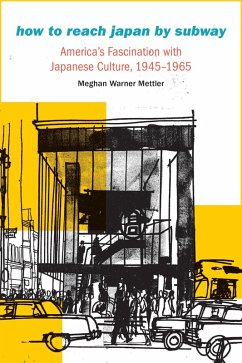Japan's official surrender to the United States in 1945 brought to an end one of the most bitter and brutal military conflicts of the twentieth century. U.S. government officials then faced the task of transforming Japan from enemy to ally, not only in top-level diplomatic relations but also in the minds of the American public. Only ten years after World War II, this transformation became a success as middle-class American consumers across the country were embracing Japanese architecture, films, hobbies, philosophy, and religion. Cultural institutions on both sides of the Pacific along with American tastemakers promoted a new image of Japan in keeping with State Department goals. Focusing on traditions instead of modern realities, Americans came to view Japan as a nation that was sophisticated and beautiful yet locked harmlessly in a timeless "Oriental" past. What ultimately led many Americans to embrace Japanese culture was a desire to appear affluent and properly "tasteful" in the status-conscious suburbs of the 1950s. In How to Reach Japan by Subway, Meghan Warner Mettler studies the shibui phenomenon, in which middle-class American consumers embraced Japanese culture while still exoticizing this new aesthetic. By examining shibui through the popularity of samurai movies, ikebana flower arrangement, bonsai cultivation, home and garden design, and Zen Buddhism, Mettler provides a new context and perspective for understanding how Americans encountered a foreign nation in their everyday lives.
Dieser Download kann aus rechtlichen Gründen nur mit Rechnungsadresse in A, B, BG, CY, CZ, D, DK, EW, E, FIN, F, GR, HR, H, IRL, I, LT, L, LR, M, NL, PL, P, R, S, SLO, SK ausgeliefert werden.









